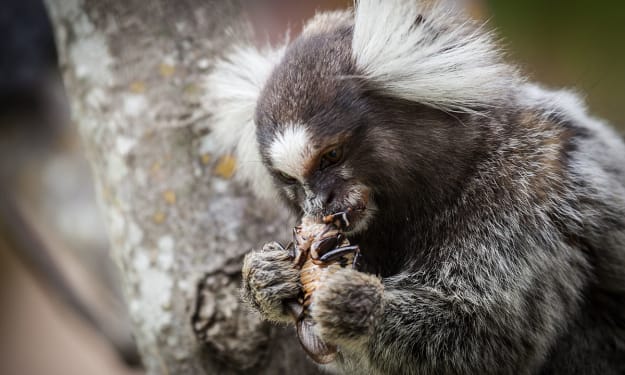In my adult years, I’ve often told people I’m not afraid of heights, just afraid of falling from them. When my wife and I were dating, we went on a particular ride at an amusement park. The ride basically lifted you into the air and shot you back toward the ground at something like 5Gs (not the cellular data version — the gravitational one).
I screamed, quite literally, as though I were being murdered right there on that ride. In spite of that, my wife still married me. Whew!
Rides like that are designed to be safe, incredibly so, in fact. The International Association of Amusement Parks and Attractions puts the odds of suffering a fatal injury on a ride at fixed-site amusement parks (Disney, Six Flags, etc.) at one in 750 million. You’re about twice as likely to suffer a shark attack as you are to sustain an injury requiring a hospital stay from such a ride. As low as that injury rate is, even fewer are due to mechanical issues. In short: the rides are extremely well designed for safety.
Another example: If you ever learned how to ride a bike, perhaps you learned with a training wheel attached to either side. They’re little wheels that attach to the back axle of the bike of a bracket that positions the wheels on the ground to assist the rider in balancing; a safety net of sorts.
Life, of course, doesn’t come with overengineering, safety nets, or training wheels. No surprise there. Also, everything we do in life comes with a measure of risk. You can’t walk out the front door without risking something. Of course, you also can’t stay home and be risk free.
Many of us get in large metal boxes on wheels to travel to and from all kinds of places with little thought about the risk inherent in operating a motor vehicle. The National Highway Traffic Safety Administration put the number of automobile fatalities at 42,915 in 2021. That puts your odds of dying in a car accident at about 1 in 7,700 in the United States.
Does that mean we stop driving? For most people, the answer is no. It’s a measured risk, one where the benefits outweigh the risks.
▪▪▪▪▪▪▪▪
Neil Simon famously stated, “If no one ever took risks, Michelangelo would have painted the Sistine floor.”
And we’ve all heard dozens of quotes on the need to take risk because most rewards require some kind of risk. And, it’s in taking risks that real growth happens. To grow, we have to step outside of our comfort zone. Equally true, if we choose to stay inside our comfort zone we risk staying stuck in one place, closing ourselves off to opportunities to grow.
Even though risk is required in many of life’s situations, that doesn’t mean we need to approach those risks foolishly. For me, foolish risk looks like the annual running of the bulls in Pamplona. In 2019, eight people were gored. That’s actually not the most foolish part, however. What borders on insanity (again, personal opinion) is that over one million people descend on a small town, get crazy drunk, then do stupid things which are often considered “being brave.”
▪▪▪▪▪▪▪▪
Risk Assessment
Unless you’re in investment banking or looking at taking on equity partners in a business, there are not many situations where you’ll sit down and do a formal statistical analysis of each risky situation in life. You won’t likely calculate the likelihood that asking someone out will result in success (unless you’re a theoretical physicist).
Assessing risks falls into four, broad categories:
- Automatic. These are risks that are so small we make the decision without even considering the risk. For example, suppose you purchased a new shirt from a trendy fashion boutique. You wear it to work on a Thursday which just happens to be the same day that your coworker wears the same thing. You both laugh about it, get a picture together, and your boss brings it up at the annual BBQ.
- Minor. These are assessments that require a bit more thought. If you live in a place prone to snow, you probably know how to drive in it. Even so, risk of accident increases when there’s snow on the road so you may have to decide whether to drive into work or work from home (if that’s an option). If working from home isn’t an option, it’s working out which route to work has the lowest risk of being treacherous.
- Major. These are the risks that accompany major life events: getting married, having children, moving to another country, purchasing a home; things that will have lifelong consequences. Decisions in this category may involve some math, making lists, and talking to trusted advisors.
- Critical. There are not many risks that fall into this category. If you’ve ever watched a circus, this is the trapeze-artist-with-no-safety-net kind of risk. Check this box if you’re an astronaut or daredevil. This is the category of risks that have a probability of debilitating injury or life-ending consequences. But for the sake of science, fast food, and stupidity, this category may not exist at all.
With these categories in mind, how do you actually assess risk in your life? There are two broad concepts that summarize how: understanding your own risk tolerance and weighing the pros and cons of the risk. Let’s look at a simple example of how risk tolerance plays a big part in assessing risk.
Jenna is a mother of two small children whose partner left her in the dark of night without a word. Jenna finished high school but didn’t go to college or get technical training because her partner was bringing in enough to provide for their family. Jenna and her partner made the decision that she would stay home with the kids.
If Jenna has high risk tolerance, she may decide to start a business and take classes at night while juggling a low-wage job so she can provide for her children. She may reason that she has nothing to lose.
On the other hand, if her risk tolerance is low, she may look to family and government assistance to keep her going while she tries to find a job making enough money to provide for her kids. In this scenario, she may reason that she has everything to lose.
How to identify your own risk tolerance and weigh pros and cons is a discussion for another day. For now, I’ll close with this parting thought from Theodore Roosevelt:
Far better it is to dare mighty things, to win glorious triumphs, even though checkered by failure, than to take rank with those poor spirits who neither enjoy much nor suffer much, because they live in the gray twilight that knows neither victory nor defeat.
▪▪▪▪▪▪▪▪
Thanks for reading!
About the Creator
Aaron Pace
Married to my best friend. Father to five exuberant children. Fledgling entrepreneur. Writer. Software developer. Inventory management expert.
Reader insights
Nice work
Very well written. Keep up the good work!
Top insight
Heartfelt and relatable
The story invoked strong personal emotions







Comments (1)
Hearted and subscribe, love the message in your stories